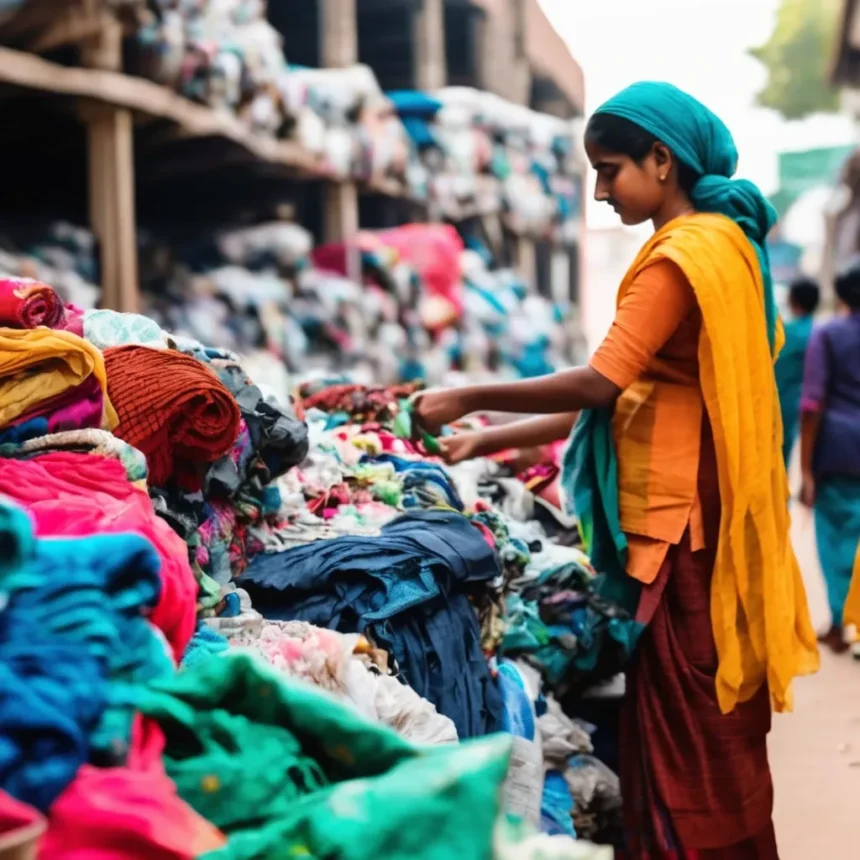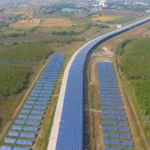India’s booming fashion industry, fueled by fast fashion trends, has become a major contributor to textile waste, accumulating 7.8 million tonnes annually. This accounts for 8.5% of global textile waste, making India one of the top three countries in the world for textile waste generation. While some of this waste is reused or recycled, a significant portion ends up in landfills or is downcycled, creating environmental challenges that demand immediate attention.
The Scale of the Problem
High Waste Generation
-
India generates 7.8 million tonnes of textile waste annually, ranking among the top three largest producers globally.
-
This waste makes up 8.5% of the world’s total textile waste, highlighting India’s substantial contribution to the problem.
-
Waste is produced at both pre-consumer (fabric scraps, yarn leftovers) and post-consumer (discarded clothing, footwear) stages.
Landfill Overload
-
A large portion of India’s textile waste ends up in landfills, exacerbating environmental pollution.
-
Textile waste in landfills releases greenhouse gases, contributing to climate change.
Challenges in Waste Management
Limited Recycling and Upcycling
-
While efforts exist to recycle and upcycle textiles, only a small fraction is reintegrated into the global supply chain.
-
Most recycled material is of lower quality, making it unsuitable for high-end apparel manufacturing.
Lack of Infrastructure and Technology
-
India’s textile recycling industry lacks modern infrastructure and technological advancements to handle the volume and complexity of waste effectively.
-
Blended and printed textile waste remains particularly difficult to process, requiring more investment in advanced recycling technologies.
Unorganized Waste Value Chain
-
The textile waste sector in India remains largely unorganized, with inefficiencies leading to leakages at multiple levels.
-
Sorting and separating synthetic fabrics, such as polyester, is challenging due to their chemical composition and diversity.
Environmental Impact of Textile Waste
1. Landfill Pollution
-
Textile waste takes decades to decompose, leading to long-term environmental degradation.
-
Decomposing fabrics release methane, a potent greenhouse gas that contributes to global warming.
2. Water Pollution
-
The textile industry is one of the largest water consumers, with fabric dyeing and processing releasing toxic chemicals into rivers and lakes.
-
Wastewater from textile factories contaminates water bodies, making them unsafe for consumption and harming aquatic life.
3. Microplastic Pollution
-
Synthetic clothing sheds microplastics during washing, which eventually flows into waterways and oceans, harming marine ecosystems.
4. Resource Depletion
-
The production of textiles, especially synthetic fibers, depends on non-renewable resources such as petroleum and fossil fuels.
-
Excessive cotton production also strains water resources, worsening water scarcity issues.
Potential Solutions for a Sustainable Fashion Industry
1. Promoting a Circular Economy
-
Encouraging reuse, repair, and upcycling can significantly reduce textile waste and extend garment life cycles.
-
Brands can implement take-back programs to ensure old clothing is responsibly repurposed or recycled.
2. Developing Infrastructure and Technology
-
Investment in modern textile recycling facilities and advanced fiber-sorting technology is critical to improving sustainability.
-
Blended and printed textile waste requires special focus, as current technologies struggle to efficiently process these materials.
3. Raising Consumer Awareness
-
Consumers must be educated about the environmental impact of fast fashion and encouraged to adopt sustainable shopping habits.
-
Promoting slow fashion and minimalist wardrobes can help reduce unnecessary clothing purchases.
4. Supporting Sustainable Practices in the Industry
-
Fashion brands should prioritize natural and sustainable materials such as organic cotton, hemp, and biodegradable synthetics.
-
Companies can shift towards low-impact dyeing techniques and waterless textile production.
-
Implementing Extended Producer Responsibility (EPR) policies will encourage brands to take accountability for the entire life cycle of their products.
The Future of Sustainable Fashion in India
India’s fashion industry is at a crucial turning point. Addressing textile waste and sustainability challenges requires collaborative efforts from fashion brands, policymakers, and consumers. By embracing circular fashion, investing in recycling infrastructure, and promoting responsible consumer behavior, India can pave the way for a greener, more sustainable future in fashion.
With growing ESG consciousness, brands that take bold action today will not only contribute to a healthier planet but also secure their place in a future driven by sustainability and ethical fashion.












